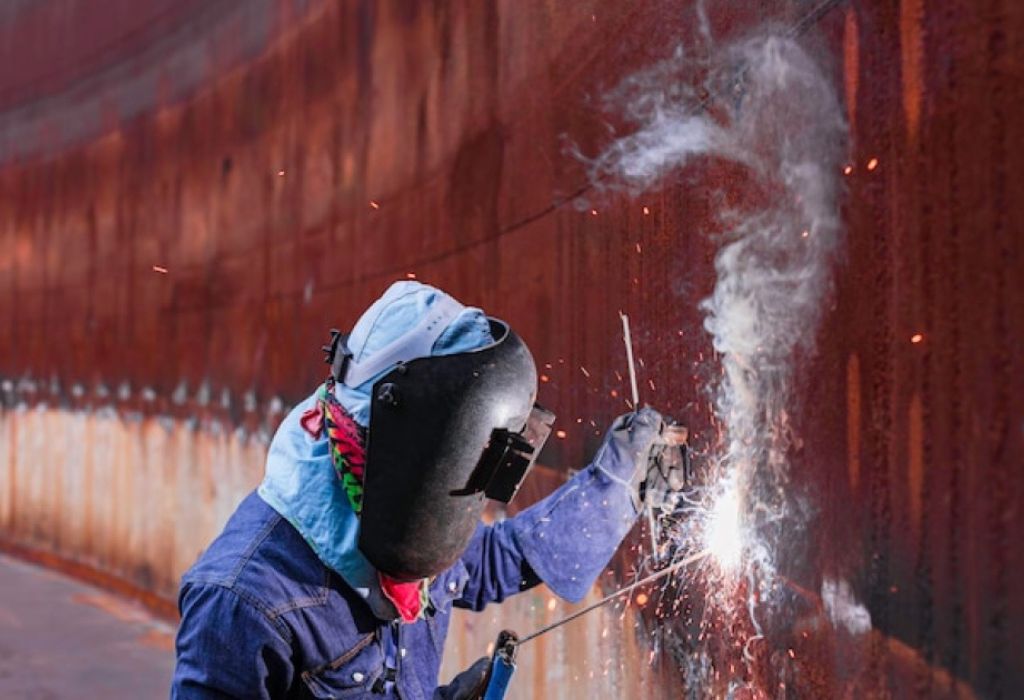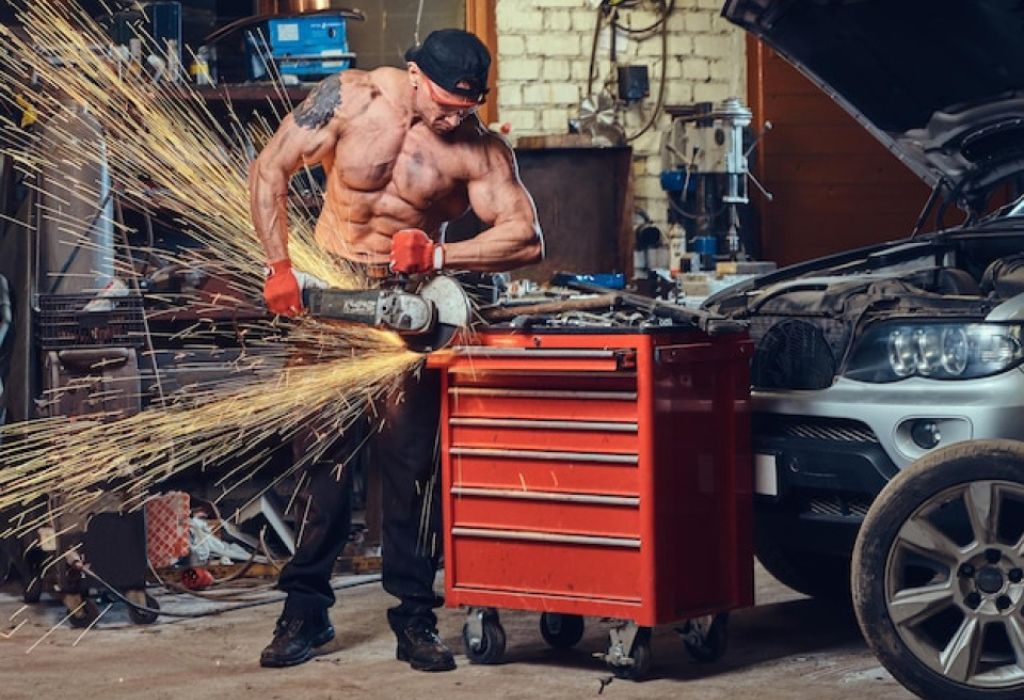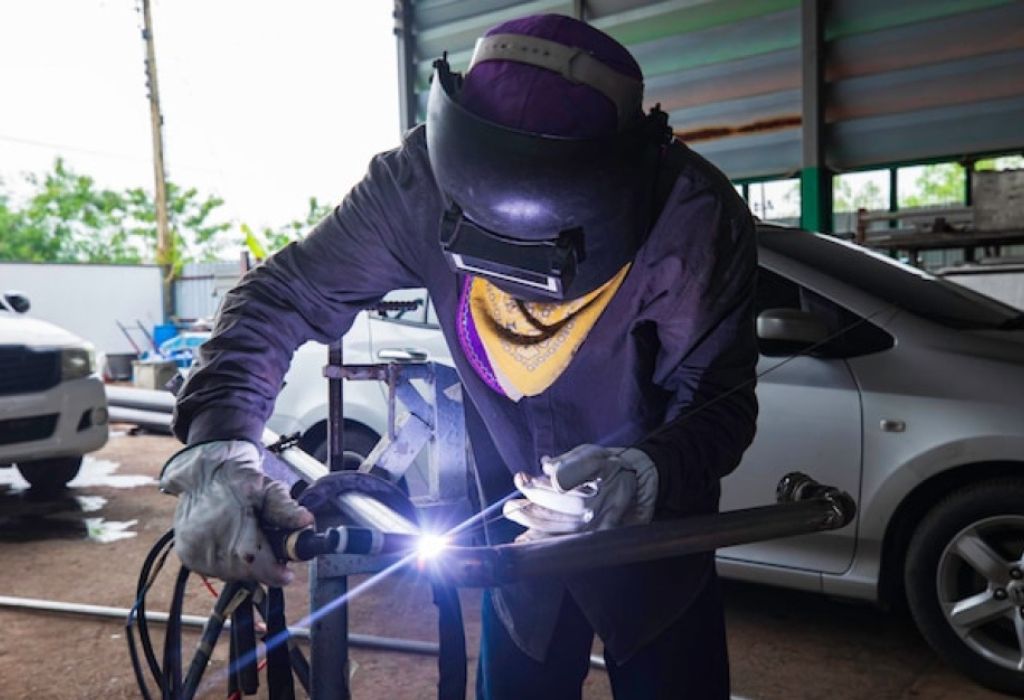Every race car that speeds around a NASCAR track depends on flawless welds holding its chassis and roll cage together.
A single weak joint could threaten the safety of drivers and end a team’s chances of victory. This high-stakes environment makes the NASCAR welder one of the most crucial specialists behind the scenes.
Aspiring welders often wonder how to become a NASCAR welder and enter the fast-paced world of motorsports.
The path demands more than standard shop skills. It requires precision, certifications, and years of practice mastering advanced techniques like TIG welding and MIG welding. Unlike many other welding jobs, NASCAR fabrication involves thin metals, tight tolerances, and constant pressure to maintain structural integrity at extreme speeds.
The demand for skilled welders continues to rise across industries. According to the U.S. Bureau of Labor Statistics, over 42,000 welding jobs are projected to open each year through 2032 .
Motorsports fabrication is a niche within this growing field, but one that attracts dedicated individuals passionate about racing and technical excellence.
For those who combine mechanical knowledge with welding expertise, NASCAR offers a career where every bead of weld directly impacts performance and safety.
It is not just a trade; it is a craft tied to speed, innovation, and precision. Understanding the training, certifications, and experience required is the first step toward joining a racing team’s fabrication shop.
This guide explains how to become a NASCAR welder, covering the essential skills, certifications, and career path you need to turn a passion for welding into a career in motorsports.
What Is a NASCAR Welder?

A NASCAR welder is a fabrication specialist who builds and repairs the structural components of race cars. Their work ensures that chassis, roll cages, and body panels can withstand the extreme forces of competitive racing.
Unlike general welding roles, this position demands mastery of precision techniques. NASCAR welders often use TIG welding for chromoly tubing and MIG welding for sheet metal to balance strength and weight. Every joint must meet strict tolerances because even the smallest flaw can compromise safety at high speeds.
These welders are usually employed in fabrication shops operated by racing teams. Some remain in the shop full-time, while others travel with pit crews to perform critical repairs between races. Their expertise is not only about welding but also about interpreting blueprints, using specialized tools, and understanding motorsports engineering standards.
What does a NASCAR welder do?
They fabricate and repair chassis, roll cages, and other structural components of race cars.
Which welding processes are used most?
TIG welding is preferred for precision tubing, while MIG welding is common for sheet metal and body panels.
What materials are welded in NASCAR?
Chromoly steel, mild steel, and aluminum are frequently used in race car fabrication.
Do NASCAR welders travel with teams?
Yes, some welders join pit crews and perform emergency repairs at race events.
How is NASCAR welding different from standard welding?
It requires tighter tolerances, lighter materials, and precision that directly affects driver safety and performance.
Why Choose This Career?
Choosing to become a NASCAR welder is about combining passion for racing with a highly specialized skill. Welders in this field contribute directly to safety and speed, making their role both impactful and rewarding.
The benefits include competitive pay, opportunities to work with high-performance teams, and the chance to be part of motorsports innovation. However, the work is also demanding, with long hours and high expectations for flawless execution.
Industry data shows that welding careers overall are expected to grow steadily, with employment projected to remain strong across sectors. For motorsports, the need for skilled fabricators is consistent, as each racing season brings new cars, repairs, and modifications.
Is being a NASCAR welder rewarding?
Yes, it is rewarding for those who value precision, speed, and being part of high-performance racing.
What are the challenges?
The challenges include strict tolerances, long hours, and competition for limited roles.
Is there demand for motorsports welders?
Yes, motorsports teams and performance shops require skilled welders for race preparation and repair.
Can this role lead to other positions?
Yes, welders can advance to lead fabricator, shop manager, or welding inspector.
What is the work environment like?
It involves fabrication shops, racetracks, and pit lanes, with noise, heat, and strict deadlines.
Educational Prerequisites & Training
The first step toward becoming a NASCAR welder is obtaining a high school diploma or equivalent. This foundation helps in understanding math, science, and mechanical concepts essential for welding.
Next, aspiring welders typically attend trade schools or technical institutes that offer welding programs. These schools provide hands-on training with TIG and MIG processes, blueprint reading, and safety standards. Specialized motorsports training, such as at the NASCAR Technical Institute, gives students an edge.
Certifications are highly valued in this field. The American Welding Society (AWS) Certified Welder credential validates skill, while additional certifications in structural or pipe welding demonstrate versatility. Practical welding tests are often required during job applications.
Do you need a degree to become a NASCAR welder?
No, but trade school or technical training is strongly recommended.
Which certifications matter?
AWS Certified Welder, structural welding certificates, and motorsport-specific credentials.
How long does training take?
Most welding programs take 6–12 months, with additional motorsports specialization adding more time.
Are there motorsports welding programs?
Yes, institutions like NASCAR Technical Institute offer racing-focused fabrication training.
Is hands-on training important?
Yes, hands-on welding and shop experience are essential for skill development.
Key Skills, Techniques & Tools
NASCAR welders need more than basic welding knowledge. They must master TIG welding for thin tubing, MIG welding for sheet metal, and occasionally aluminum welding for lightweight components.
Tools include plasma cutters, grinders, tubing benders, and jigs to ensure accurate fabrication. Precision measuring instruments help maintain strict tolerances. Beyond technical skills, soft skills like problem-solving and attention to detail are crucial.
Which welding process is most used?
TIG welding is most critical, but MIG is also widely applied.
What tools must a NASCAR welder master?
Plasma cutters, tubing benders, grinders, and fabrication jigs.
How important is blueprint reading?
Very important, as welders must follow technical drawings and specifications.
What soft skills are needed?
Patience, focus, and problem-solving are key traits.
Is experience more important than certifications?
Experience is highly valued, but certifications validate expertise.
Career Path & Experience Building

The path to becoming a NASCAR welder often begins with entry-level jobs in general fabrication shops. From there, welders gain experience before transitioning to motorsports environments.
Internships or apprenticeships in racing shops provide exposure to specialized techniques. Networking through racing events, trade shows, and motorsports forums can also open doors. A strong portfolio with photos and documented welds builds credibility.
How do you start in motorsports fabrication?
By working in general welding or fabrication before moving into racing shops.
Is an internship helpful?
Yes, internships offer valuable exposure to motorsports standards.
How many years of experience are needed?
Most teams prefer 3 or more years of relevant fabrication experience.
Can a portfolio help?
Yes, showcasing weld samples and past projects strengthens applications.
Should you specialize?
Yes, focusing on chassis, roll cages, or aluminum welding increases job prospects.
Job Requirements & Expectations
Employers expect NASCAR welders to deliver flawless welds under pressure. Welders must work with tight tolerances, interpret technical drawings, and meet strict safety standards.
Physical endurance is also necessary. The role involves standing for long periods, lifting heavy materials, and working in noisy, hot environments. Passing welding tests is often mandatory before being hired.
What minimum qualifications are common?
High school diploma, welding certification, and fabrication experience.
What tolerance levels are expected?
Very tight tolerances, often measured in fractions of an inch.
What testing is required?
Practical weld tests, visual inspection, and sometimes NDT methods.
Is travel required?
Yes, some welders travel with pit crews or teams.
What physical demands exist?
Welders must stand, lift, and work in confined or hot environments.
Salary, Job Outlook & Industry Trends
Welding salaries vary widely, and NASCAR welders are often paid based on skill and experience. Entry-level fabricators may earn around $18–$25 per hour, while highly skilled welders on racing teams can make significantly more.
According to ZipRecruiter, motorsports fabricator salaries range from $40,000 to $80,000 per year, depending on role and location (ZipRecruiter source). With motorsports continuing to grow, skilled welders remain in demand.
What is the salary range?
Between $40,000 and $80,000 annually, depending on skills and experience.
Is demand growing?
Yes, welding jobs overall are projected to grow steadily.
Where are the opportunities?
In NASCAR teams, motorsport shops, and aftermarket performance companies.
What influences pay?
Experience, team reputation, specialization, and location.
Are there seasonal factors?
Yes, race seasons can affect workload intensity.
Challenges & Common Pitfalls
NASCAR welding is demanding, with no room for error. Challenges include maintaining precision under tight deadlines and adapting to unexpected race-day repairs.
Common pitfalls include rushing welds, misreading blueprints, or neglecting tool maintenance. To succeed, welders must maintain discipline, focus on continuous improvement, and invest in ongoing training.
What are the biggest challenges?
Precision, deadlines, and pressure from racing environments.
Is competition steep?
Yes, many welders compete for limited motorsports positions.
What mistakes are common?
Inconsistent welds, poor tolerances, and weak joints.
How to overcome equipment issues?
Regular maintenance and learning advanced tool usage.
Is burnout possible?
Yes, long hours and high demands can cause fatigue.
Tips for Success & Best Practices

Documenting your work is a powerful way to showcase skills. Portfolios with photos and weld samples impress employers. Networking at races and motorsports events builds valuable connections.
Continuous learning is critical. Taking advanced welding courses, following new motorsports technologies, and staying adaptable ensures long-term success.
Should you document your work?
Yes, it strengthens your portfolio and job applications.
Is networking helpful?
Yes, connections often lead to job opportunities.
How to stay current?
By attending courses and following motorsports industry updates.
Should you specialize further?
Yes, mastering niche skills sets you apart.
What mindset helps?
Precision, patience, and dedication to improvement.
Future Trends in Motorsport Welding
Motorsport welding is evolving with new technologies. Automation and robotic welding may handle repetitive tasks, but human precision will remain essential for critical joints.
Lightweight materials such as composites and carbon fiber are also shaping the future. Welders who adapt to emerging methods, including additive manufacturing, will be in high demand.
How will automation affect the role?
Automation may reduce repetitive tasks but not precision welding.
Will new materials matter?
Yes, composites and alloys are becoming increasingly common.
Is there room for hybrid skills?
Yes, combining welding with CAD or robotics offers a competitive edge.
Will mobile fabrication grow?
Yes, mobile welding units for pit crews are likely to expand.
How to stay ahead?
By learning new techniques and monitoring motorsports R&D.
Conclusion
Becoming a NASCAR welder is a challenging but rewarding path. It combines technical skill, motorsports passion, and precision that directly impacts race performance and driver safety.
The journey requires certifications, experience, and the determination to meet strict standards. With dedication, welders can build a career in motorsports fabrication, joining racing teams and contributing to the success of NASCAR.
Those who invest in training, build strong portfolios, and continuously improve their craft will find opportunities in this exciting field. For anyone wondering how to become a NASCAR welder, the answer lies in combining skill with passion and taking steady steps toward a career in racing.

I’m Darrell Julian, the founder, lead writer, and hands-on welding enthusiast behind ArcWeldingPro.com. With more than 15 years of real-world welding experience, I created this platform to share what I’ve learned in the field, in the shop, and in the heat of the arc.


